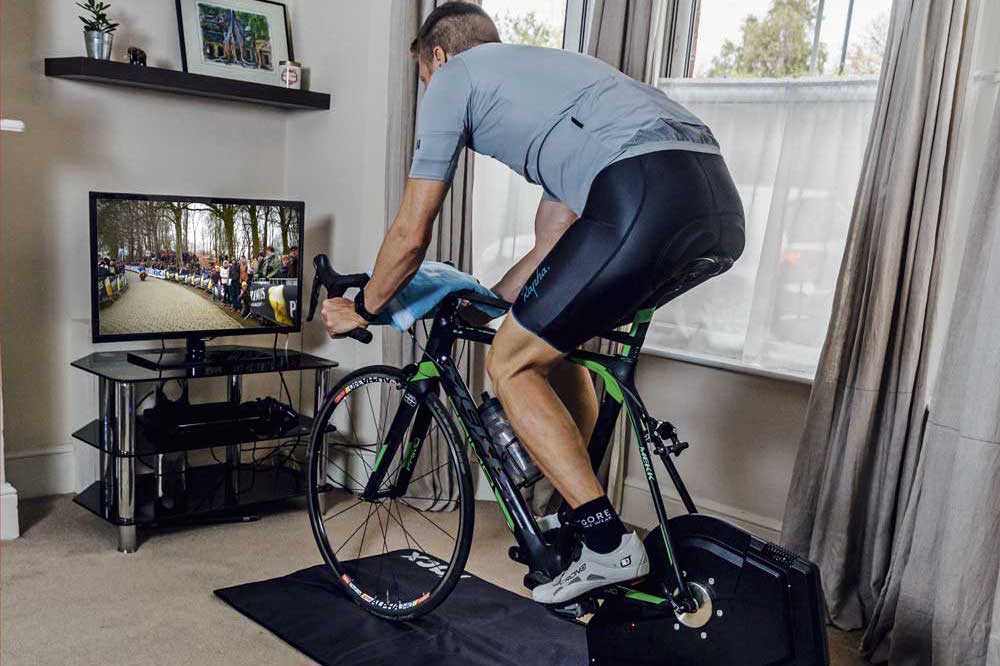How to do a strength building HIIT session (video)
Direct-drive trainers are ideally suited to the low-cadence sessions you need to maximise your force ouput and become a stronger cyclist

Promotional feature with Tacx
For most people strength is not the limiting factor when it comes to turning the pedals over faster.Unless you’re on the steepest of gradients, vastly over-geared, or an all-out track sprinter, then you’re probably riding well within your capabilities in terms of maximum force at the pedals.
For full-time professionals who are already doing 30 hours a week of cycling, specific work inside the gym is a perfect supplement to their riding. However, for the rest of us, getting stronger without sacrificing time on the bike is a great way to get the best of both worlds.
The purpose of this session is to manipulate your cadence in a controlled environment in order to increase the muscular force required to turn the pedals. A direct-drive trainer which allows for high-torque pedalling without any rear-wheel slippage will make this workout far easier to complete.
It’s important during these workouts that you maintain a strong core and remain stable on the bike. The only thing that should be moving is your legs. If you are rocking and rolling all over the bike then it’s likely that your core strength isn’t giving you a stable enough platform with which to push hard from.
What it’s for
Getting you over steep hills. Improving your muscular endurance, time trial speed and ability to push a big gear.
The latest race content, interviews, features, reviews and expert buying guides, direct to your inbox!
How to do it
Use a direct-drive trainer that doesn’t suffer from rear-wheel slippage.
Select ERG mode on your trainer and program the workout using your smart trainer software so that you can focus on good pedal technique and low cadence without having to worry about anything else.
It is also possible to pre-program this workout into the Tacx app (free to download on Android and iTunes).
Alternatively, select a riding app that will use your trainer to simulate a long climb and apply changes in gradient
to your ride. The Tacx Neo can simulate up to a 25 per cent gradient, which you’d be hard-pressed to find in the real world.
For extra motivation use the video feature built into the Tacx software, which shows you ascending an iconic climb in real time and adjusts your speed based on your power output.
For the main 20-minute efforts select a low cadence that doesn’t put too much stress on your joints and leave them sore. Between 60rpm and 80rpm is a typical target for this style of workout.
Lift the cadence if it feels too difficult to complete. Focus on hitting the power numbers first and reduce the cadence over time if it doesn’t come naturally. Make note of your power output for these sessions and see how it changes in relation to your heart rate over time.
This is a great way to measure and see real improvements to your fitness.
For your warm-up, rest periods and cool-down, take the strain off your muscles by spinning a lighter gear.
A cadence that feels natural should be the most efficient; try 90rpm to 100rpm for these sections if you’re unsure.
Try a strength session for yourself
1 After a 17-minute steady and progressive warm-up, complete
2 x 20 minute pyramid-style intervals.
2 Each 20-minute block is broken down into 5 x 4 minute segments starting at 80% of your FTP, building up to 90% and then coming back down again.
3 Complete these 20-minute blocks at a very low cadence of between 60 and 80rpm. Maintain a strong core and smooth pedalling technique throughout.
4 For the rest periods and cool- down, select a higher and more natural cadence to rest the legs.